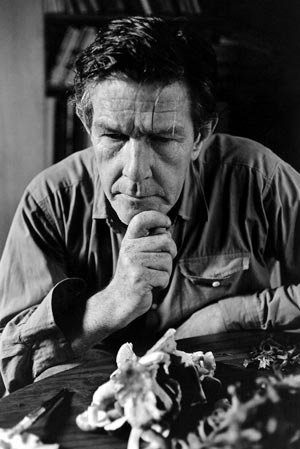|
I wandered, too, wondering why people had paid to be here. Cage's voice was treated with so many sound effects that I couldn't make out a word, only something that sounded like the moaning of Jacob Marley in Brian Desmond Hurst's classic 1951 adaptation of Dickens’ A Christmas Carol. The auditorium, in the Ontario College of Art and Design, was indeed transformed into a birdcage, but with a city inside, and the three tracks of the composition — Cage's voice, the birds, and the street noises — were played randomly by a computer, with a soundman mixing the signals. The three things made sense together, as Walden is about Thoreau's attempt to transcend the materialistic life of the city by living in the woods.
But five minutes was enough. It's the sort of thing you walk in and out of, like looking at a painting, and that's what BirdCage is really, a sound painting, not a musical composition.
Cage was into experimental music. He was born in LA and lived from 1912 to 1992, spending his life doing weird, controversial things. He studied with Schoenberg, the great pioneer of serial music, and eventually got into 'chance' music — for example, composing music by throwing dice or flipping coins or using computers. This kind of approach can lead to new sounds, but it doesn't have much emotional content.
|
|

John Cage |


